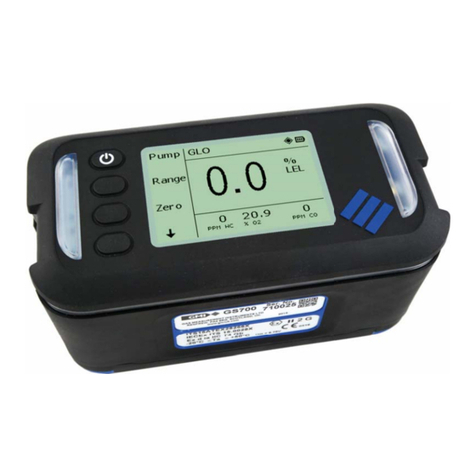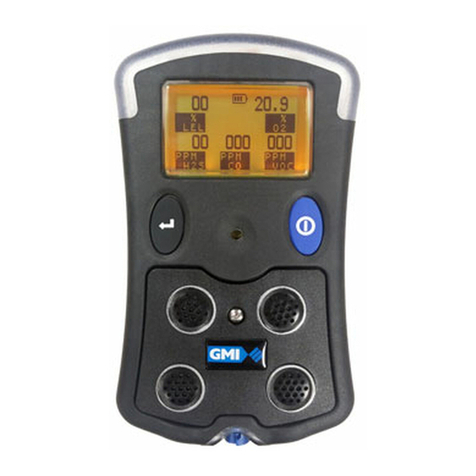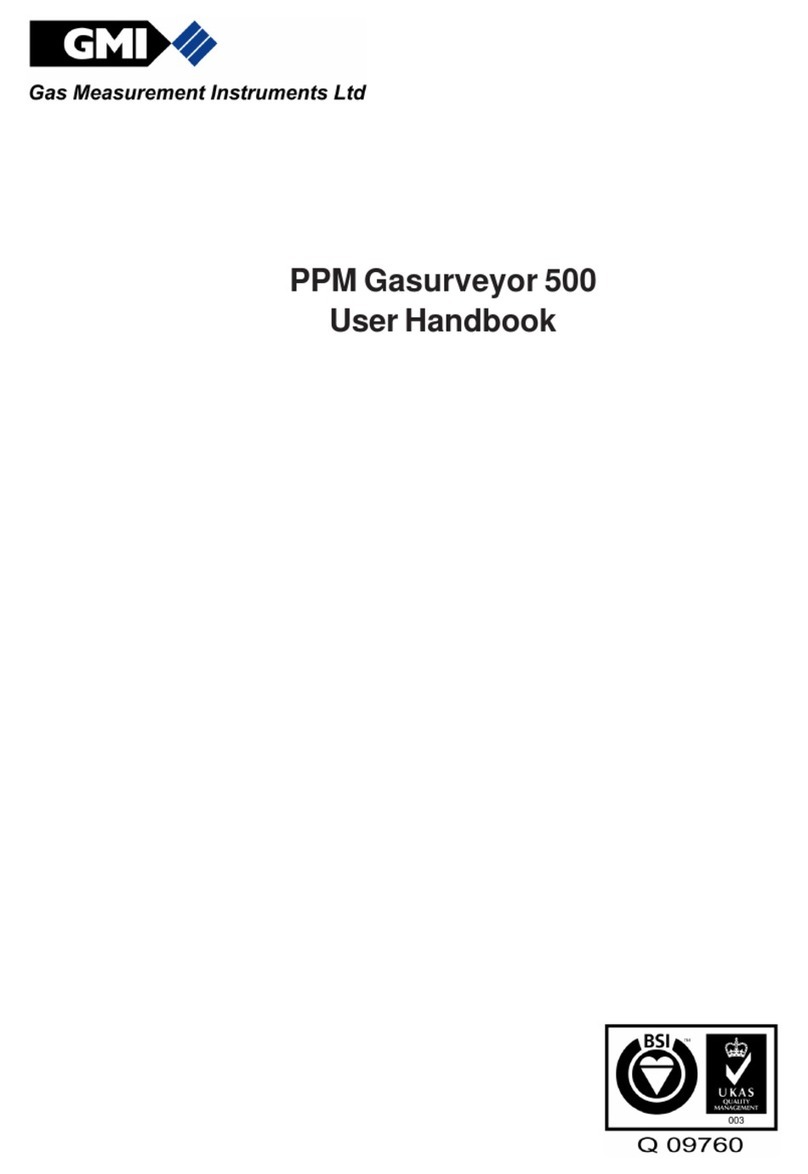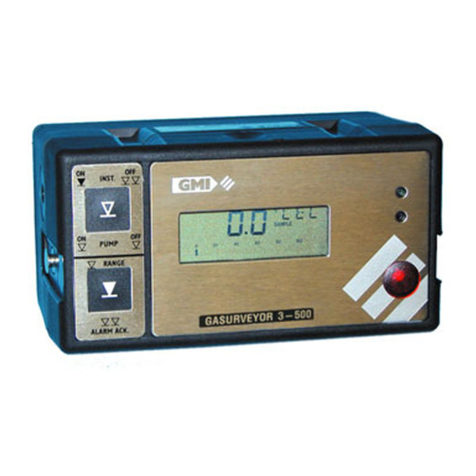
OXYGAS P-500 USER HANDBOOK
ii
SAFETY
• The instrument must be regularly serviced and calibrated by fully
trained personnel in a safe area.
•Batteries: Alkaline batteries or *Rechargeable battery pack must be
exchanged (*and recharged) in a safe area and fitted correctly
before use. Never use damaged batteries or expose to extreme heat.
See Section 4 : OPERATOR MAINTENANCE.
• Only GMI replacement parts should be used.
• If the instrument detects gas, follow your own organisation’s
procedures and operational guidelines.
• The combustion chamber is a flameproof assembly and must not be
opened in the presence of a flammable atmosphere.
• Gas can be dangerous and care should always be taken in its use.
• Oxygas P-500 instruments are certified as EEx iad IIC T4
(-20oC<Tamb <50oC). BAS01ATEX2292 II 2 G.
UL Class 1 Groups A, B, C and D.
• This equipment is designed and manufactured to protect against
other hazards as defined in paragraph 1.2.7 of Annex II of the ATEX
Directive 94/9/EC
Any right of claim relating to product liability or consequential damage to any
third party against GMI is removed if the warnings are not observed.
AREAS OF USE
Exposure to certain chemicals can result in a loss of sensitivity of the
flammable sensor. Where such environments are known or suspected it is
recommended that more frequent response checks are carried out. The
chemical compounds that can cause loss of sensitivity include Silicones,
Lead, Halogens and Sulphur. Do not use instrument in potentially
hazardous atmospheres containing greater than 21% Oxygen. The
enclosure material is polypropylene and must not be exposed to
environments which are liable to result in mechanical or thermal
degradation or to damage caused by contact with aggressive substances.
Additional protection may be required in environments where the
instrument enclosure is liable to damage.
STORAGE, HANDLING AND TRANSIT
The batteries in the rechargeable pack contain considerable energy and care
should be taken in their handling and disposal. Battery packs should be
removed if the instrument is stored for longer than 3 months. The instrument
is designed to handle harsh environments. The sensing elements are sealed
to IP54 and the rest of the instrument to IP64. If not subject to misuse or
malicious damage, the instrument will provide many years of reliable service.
The instrument contains electrochemical sensors with a life of 2 years. Under
conditions of prolonged storage the sensors should be removed. The sensor
contains potentially corrosive liquid and care should be taken when handling
or disposing of the sensor, particularly when a leak is suspected.




































